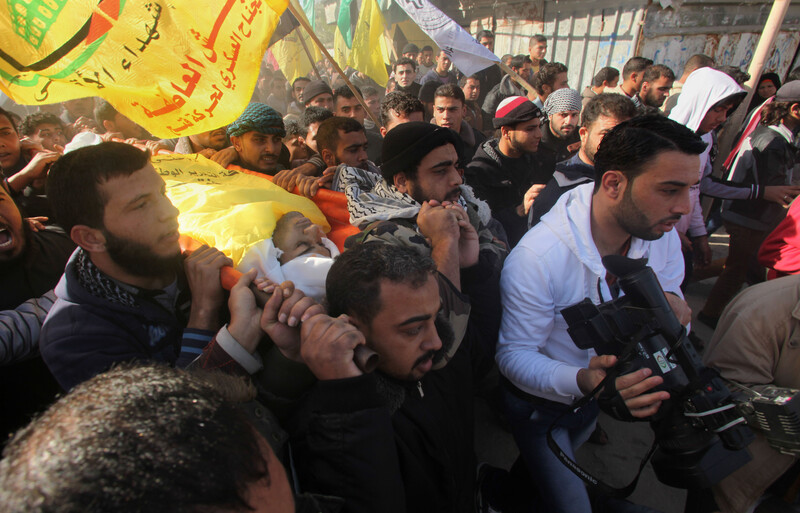The Electronic Intifada Gaza Strip 14 May 2014

One of the most pervasive myths about Israel is that it has withdrawn from Gaza. Attacks on Palestinians near Gaza’s boundary with present-day Israel expose the claim as false.
Four Palestinian civilians have been killed by Israeli gunfire in the boundary areas so far this year. In March, the Israeli military was responsible for at least 28 shooting incidents in the boundary areas.
The story of Odeh Hamad illustrates the dangers faced by Palestinians in Gaza trying to make a living under Israeli occupation.
The 27-year-old should have been celebrating his birthday on 20 December 2013. Instead, he was shot dead as he tried to collect scrap metal with his younger brother Raddad.
According to Raddad (now aged 23), Odeh had only started joining him in collecting scrap metal near the Gaza-Israel boundary four months earlier. Raddad’s work involves taking material from a waste collection site in that area and then selling it in a local market.
About to leave
Raddad recalled that he and Odeh were wrapping up some scrap metal and were about to leave the area when they heard “a round of live ammunition from an Israeli watchtower.”
“At this point, Odeh was shot in the head and I was shot in the hand,” he said. “We remained about one a half hours in the same spot, until an ambulance crew entered the area to aid us. By then, Odeh was dead.”
The two brothers lived with their father and stepmother in a modest house in Beit Hanoun, a town in northern Gaza.
Warda Sehwail, Odeh’s stepmother, said that Odeh had planned to earn some money so that he could celebrate a birthday and contribute towards fertility treatment that his wife was undergoing. “We are all still shocked by his death,” his stepmother said.
War crimes
Jihad Hamad, Odeh’s father, used to work as a police officer for the Palestinian Authority. He has been out of work since Hamas took charge of administering Gaza in 2007.
“I look forward to seeing a unity government between Hamas and Fatah that would invest in people’s welfare — including education, health and labor — so that young people here will not be killed while earning a living, like what happened to my son Odeh,” he said.
After Israel withdrew its settlers from Gaza in 2005, it unilaterally declared a “buffer-zone” which Palestinians were forbidden from entering. The “buffer-zone” applied to both the land boundary between Gaza and present-day Israel and the sea off Gaza’s coast.
The Palestinian Centre for Human Rights (PCHR) argues that Israel’s attacks on civilians in the buffer-zone constitute war crimes, irrespective of whether they involve direct targeting or indiscriminate gunfire. Stopping Palestinians from tending land in the buffer-zone or undertaking other economic activities also violates the rights to work and a decent quality of life.
In theory, Palestinians may venture as close as 300 meters to the boundary between Gaza and Israel. Yet PCHR has found that attacks against civilians can take place up to 1.5 kilometers from the boundary. This means that Palestinians are at risk from Israeli gunfire on 17 percent of Gaza’s territory.
The four people killed in the boundary area so far this year include 58-year-old Amina Qdeih, a woman with a developmental disability, and according to Human Rights Watch, 16-year-old Adnan Abu Khater, who was on a picnic with some friends.
Rami Almeghari is a journalist and university lecturer based in the Gaza Strip.





